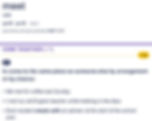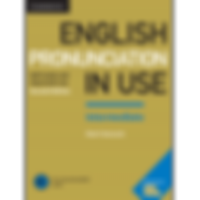Improve your Pronunciation: The Vowel Sounds /i:/ and /e/
- ARTSY Language Studio
- May 20, 2020
- 3 min read
Updated: May 21, 2020

Today we'll learn the long and short E, the sounds of /i:/ and /e/, how to read the pronunciation in a dictionary, and exercises for you to practice.
What's the difference between the following pairs?
MEAN-MEN MEET-MET MEAN-MEET ANY-MANY
Yes, it's the vowel sounds. Before beginning, have ready some pen and paper. Then:
Draw a table with two columns.
At the top of one of them, write symbol /i:/.
At the top of the second one, write the symbol /e/.
I keep almost everything in my Google Drive. This is how I do it:

The Vowel Sound /i:/
The symbol /i:/ represents the long E. To say it, you kind of need to smile! The mouth should be wide and the front of your tongue up. Here's a video so you can see what I mean.
Now that you've watched the video, you:
Watch the video one more time.
Repeat after him.
Add the words with the vowel sound /i:/ to your table.
What is very important to know is that the spelling of this sound can vary. (You'll need this info when you get to the practice section.)The vowel sound /i:/ can be spelled:
Frequently: EE (feet), EA (eat), E-E (scene)
Sometimes: E (me), IE (piece)
The Vowel Sound /e/
The symbol /e/ is pronounced like the short vowel sound of E. To make this sound, your mouth should again be wide, but your tongue stays at the front but resting. Watch the video:
We'll repeat the previous activity, which means:
Watch the video one more time.
Repeat after him.
Add the words with the vowel sound /e/ to your table.
Remember, here it is also very important to know is that the spelling of this sound can vary. (You'll need this info when you get to the practice section.)The vowel sound /e/ can be spelled:
Frequently: E (men)
Sometimes: EA (death), IE (friend), A (many), AI (said)
The Dictionary
Learning how to read phonemic symbols is easier than you think. Now that you've learned /i:/ and /e/, let's take a look at how you can learn from a dictionary.
When I'm teaching, I usually use the Cambridge Dictionary. I prefer it because it:
Shows the phonemic symbol.
Indicates the part of speech.
Offers both UK and US pronunciation audio.
Tells the English level of the word, A1, A2, B1...
Explains the meaning in an accessible language.
Gives sentences as examples of how to use the word.
Let me show you what I mean:

What can we tell?
Word: meet
Part of Speech: verb
Pronunciation: long E
Phonemic Symbol: /i:/
Synonym: come together
English Level: A1
Definition: to come to the same place
Example: We met for coffee... (past tense)
When in doubt, always go to a dictionary and verify the pronunciation of the word you're struggling with. It takes less than a minute and the difference in your pronunciation will greatly be improved!
Practice
By now, you should be familiar with different vowel sounds /i:/ and /e/, and also able to find them in a word's phonemic sound. Here are two exercises for you to practice what you've learned.
Dictionary Practice. Look at the image and complete the information.

Fill in the blanks:
Word: __________
Part of Speech: _________
Pronunciation: __________
Phonemic Symbol: ______
English Level: __________
Definition: ____________________________
Example: _____________________________
Classify the sound. Group the following words into /i:/ or /e/. Use the dictionary for help or to verify your answers.
Be Any Dreamt East End Beat Check Feet Any Death Dream Every Again Bed Bell Each Death Eat Ever Feel Easy Friend Between Many Piece
I hope today you've understood a little more about sounds and phonemic symbols!

If you wish to continue learning about English pronunciation, I recommend the book I based myself on and the one I also use with my students:
Cambridge Press offers it in three different levels: elementary, intermediate, and advanced.



